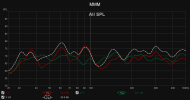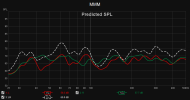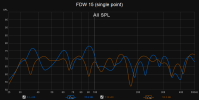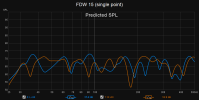No hurt in trying...
It's not possible to reduce RT with DRC. Bass energy ringing/prolonged decay reduction requires significant damping. You're already quite better off above 150Hz than before... Boosting EQ below the transition zone is not something I would recommend; only subtractive, if you feel that it is even necessary.
I remember you commenting on how Dirac evened out the subbas decay in the spectrogram in my room.





